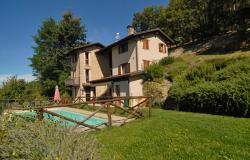Trying to support 'Man with
Submitted by Dylano on Thu, 04/08/2010 - 09:56In reply to A newbie all over again! by Annec
Trying to support 'Man with Fish van' who has started visiting the white road where we live. All of the fish he sells are caught from small boats (no deep sea stuff) and what he has is whats in season..... Have tried all sorts and experimented in the kitchen, but although drawn to the anchovies, 'allice?', dont know what to do with them.... Do you have to fillet them ???? Sure that is hard work......Has anyone got any good recipes/ideas as to how best to deal with them.....Master Chef I am not, - yet, but if I won would love to open a Sea Food Beach Shack....ahhhhh in my dreams......
alice antipasta
Submitted by rcorea on Thu, 04/08/2010 - 10:20In reply to A newbie all over again! by Annec
You can also, clean them as
Submitted by Gala Placidia on Thu, 04/08/2010 - 10:36In reply to A newbie all over again! by Annec
Just like whiebait ??? bones
Submitted by Dylano on Thu, 04/08/2010 - 11:10In reply to You can also, clean them as by Gala Placidia
Try .............
Submitted by alan h on Thu, 04/08/2010 - 13:21In reply to A newbie all over again! by Annec
Anchovies
Submitted by KarenSheffield on Thu, 04/08/2010 - 13:25In reply to A newbie all over again! by Annec
Sorry to contradict you,
Submitted by Gala Placidia on Thu, 04/08/2010 - 16:05In reply to A newbie all over again! by Annec
Sorry to contradict you, Karen, but frying with olive oil is not a waste. On the contrary. Frying in olive oil has always been an art in the Mediterranean area. Vegetable oils heated for frying easily get decomposed and frying certain foods such as fish in them increases the polyunsaturated acid content of the oil, which causes decomposition. On the other hand, olive oil is ideal for frying as it has a high smoking poing (210ºC). Normal frying temperature is 180ºC. It also forms a crust on the surface of the food you are frying, which prevents the penetration of the oil and makes the food more digestible. It also has a lower fat content than vegetable oil and for these reasons all food fried in olive oil are healthier. It can also be safely re-used for frying several times. About 5 times maximum would be the recommended rate. Dylano, anchovies are bigger than whitebait and you may notice some of the bones; however, it is not necessary to remove them all. I find that it is very easy to cut the heads and remove the guts and main bone all at the same time, leaving the anchovy butterfly open. No need to use a knife, you can easily do it with your hands. After doing this, wash your hands in cold running water without rubbing them and have some lemon or mint leaves to get rid of the smell.
ANISAKIS LARVAE
Submitted by Gala Placidia on Thu, 04/08/2010 - 16:17In reply to A newbie all over again! by Annec
One extra piece of advice, particularly if you do not know the origin of the anchovies. Many fish can be infected by the anisakis larvae which cause severe allergy reactions. The larvae can be destroyed by freezing the fish first. If you want to know more about it, here is some information: http://www.ehow.com/how_5647957_avoid-health-risks-eating-anchovies.html
Will check with fish man as to where he buys fish from
Submitted by Dylano on Fri, 04/09/2010 - 12:16In reply to A newbie all over again! by Annec
Tosh............
Submitted by Anonymous (not verified) on Sat, 04/10/2010 - 17:21In reply to A newbie all over again! by Annec
Gala if I had a euro for every time some 'Expert' had told me that this or that was bad for you, I could retire right now. Lots of animal/fish products contain bacteria that is somewhat adverse to the human gut, but the risk of getting these 'gippy tummies' is very remote if the fish are fresh or treated (pickled, salted or smoked). These so called Medical Experts are oft to sensationalism, as it gets them published and applauded for their research which is often selective.(Having read the author of the article)
ANISAKIS IS A WORM
Submitted by Gala Placidia on Sat, 04/10/2010 - 18:45In reply to A newbie all over again! by Annec
Sorry, Tinker, but I have to disagree. Anisakis is not a bacteria but a worm and it can give you a very nasty reaction. You can actually see the worms inside the guts of fresh fish and my fishmonger has shown them to me. I eat quite a lot of fish, but I am careful to cook it thoroughly and to freeze first any fish that I am going to pickle. Particularly anchovies, simply marinated with oil and vinegar or lemon juice, although delicious, can be a source of trouble. They need to be frozen first as this kills all the larvae which you can't see. By all means, eat plenty of fish, it is excellent for your health but inspect it first, cook it thoroughly or, if in doubt, freeze it first. You can find relevant information (and some photos) doing a Google search.










